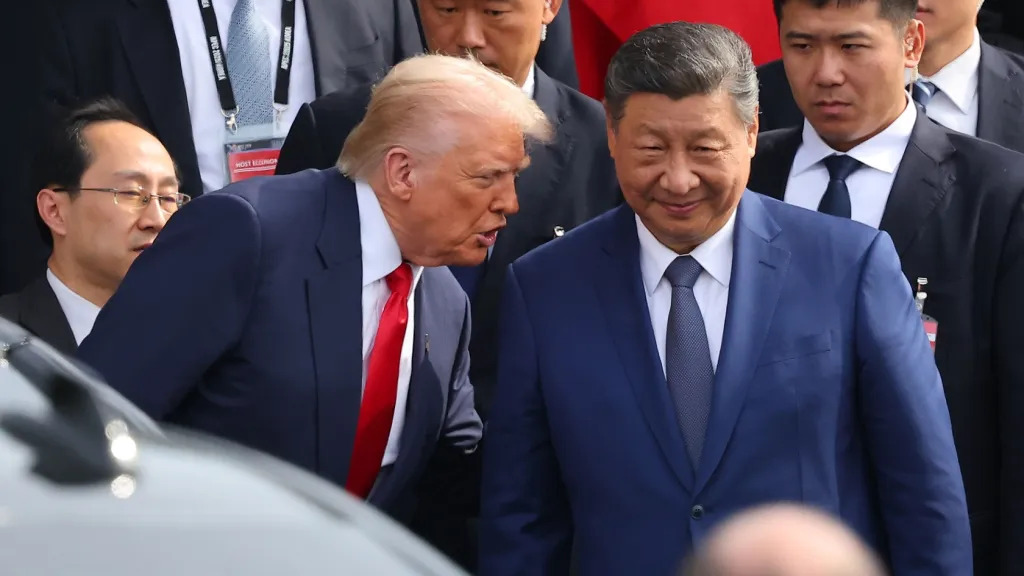The meeting of two presidents in South Korea laid a solid foundation for the future. Both China and the U.S. will exist for a long time on this planet, and that continuity should be reflected in all their relations. They have charted a new course for mutual success.

The Oct. 30 reunion of presidents Xi Jinping of China and Donald Trump of the United States in Busan, South Korea, took place after a six-year interval. It was the first meeting in person since Trump’s reelection, and it occurred at a historic moment in bilateral relations. It could bring fresh momentum to the countries’ benign interactions.
Both presidents mentioned the term “partners,” even though in recent years a China-U.S. “competition” narrative has gained the upper hand in U.S. public discourse. This one-sided view emphasizes that when one wins, the other loses. It even frames the competition as one of life or death, which could easily sink both sides into rivalry and confrontation.
“Partners,” on the other hand, try to help each other, to prosper together and try to become a better version of themselves in mutual support and cooperation. As Xi said at the beginning of the meeting, China’s development goes hand in hand with Trump’s notion to “make America great again.” Trump added after the meeting that his country “can be bigger, better, and stronger” by working with China, “as opposed to just knocking them out.”
The idea of partnership returning to China-U.S. relations sent a positive message to the outside — responding to the wishes of people in both countries and around the world.
The summit affirmed multiple consensuses reached earlier in Kuala Lumpur between the two countries’ economic and trade teams. Economics and trade may become both a stabilizer and a driver for bilateral ties. This is not only conducive to the two countries’ respective economies but will also strongly revive confidence in global markets.
Both leaders agreed that joining hands may accomplish much that benefits the world, including supporting each other in hosting major international events next year. This would demonstrate the two countries’ sense of responsibility as major countries for the betterment of global economic governance.
Xi and Trump also agreed to enhance bilateral communication. When there is more communication between China and the U.S., there will be less misjudgment.
First, the leaders should remain in constant contact. The two presidents have talked three times on the phone and exchanged correspondence multiple times since the beginning of this year, setting a course for stabilizing and improving relations. They may exchange visits next year, which is obviously important.
Second, people-to-people exchanges should be promoted. The foundation of China-U.S. relations has been built by both peoples. Personal judgment is the sunshine that dispels biases, and friendship can overcome all estrangement. Under present conditions, the importance of China-U.S. people-to-people exchanges are particularly prominent.
Hope for progress
Head-of-state diplomacy has been a decisive factor in China-U.S. relations. For all the ups and downs and twists and turns in the relationship, it generally remains stable, which has much to do with the two presidents’ leadership. Since May, Chinese and U.S. economic and trade teams have held five rounds of consultations — in Geneva, London, Stockholm, Madrid and Kuala Lumpur — and stabilized economic and trade ties, which would have been impossible without the strategic consensus of the two presidents.
If the China-U.S. relationship is a giant ship, the two leaders are the helmsmen. So long as they display fine skills and retain control over the macro situation, the relationship will be able to navigate all treacherous shoals and proceed steadily.
After the Busan summit, China and the U.S. began to lift the restrictive measures they had imposed upon each other. Bilateral trade may thus achieve restorative growth, bringing solid benefits to both sides. For instance, Jim Sutter, CEO of the U.S. Soybean Export Council, who was in China participating in the China International Import Expo, said the Busan meeting has rekindled confidence. He noted that the two countries have lots of opportunities for cooperation. Beyond trade, they may also collaborate in such fields as energy, immigration and epidemic control, and may cooperate and coordinate on international and regional hotspot issues. This will provide new dynamism for the steady development of relations.
Acting on consensus
The leaders’ meeting wouldn’t have been possible without joint endeavors by both sides, so both sides should abide by the consensuses reached. If points of agreement by leaders represent the top-level design at the strategic and planning level, their implementation calls for operating guidelines at the tactical and operational level. The U.S. side should work together with the Chinese side to follow up and work out corresponding specifics and come up with detailed plans as soon as possible.
When it comes to remarks on China-U.S. relations, they should avoid threatening or provocative statements, which could damage the hard-earned fine atmosphere. When it comes to action, corresponding U.S. authorities and agencies may need to strengthen internal coordination to avoid unilaterally introducing negative measures that deviate from — or even contradict — what the leaders agreed upon. This will help avoid unnecessary disruptions.
In addition, what the top leaders agreed should be implemented to the letter, not selective implementation, which attempts to constrain the other side, but not oneself.
Both China and the U.S. will exist for a long time on this planet, and that continuity should be reflected in all their relations. A single summit meeting can never resolve all problems, but so long as both parties proceed in their long-term best interest and sincerely meet each other halfway, they surely will be able to further stabilize and promote bilateral ties, and help each other succeed.
